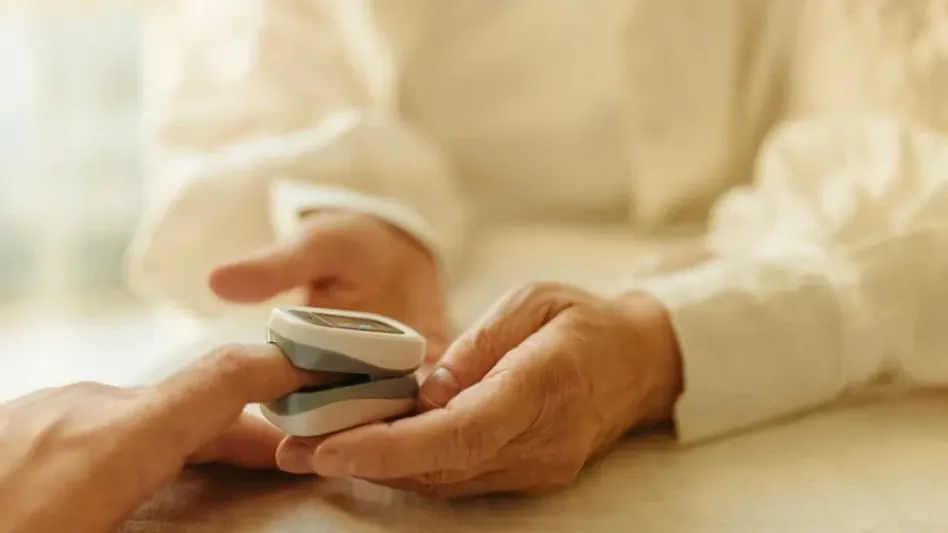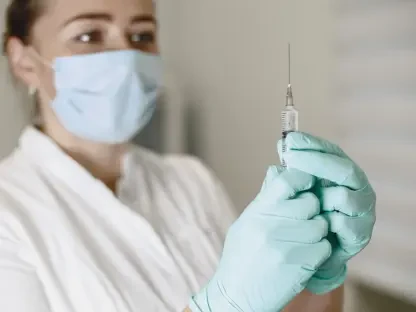The U.S. Food and Drug Administration (FDA) has recently issued new guidelines to tackle the issue of racial bias in devices that measure oxygen levels in the blood, known as pulse oximeters. These guidelines arose from the importance of this issue during the COVID-19 pandemic, when inaccuracies in these devices disproportionately affected people with darker skin tones, leading to severe health disparities. Pulse oximeters work by shining light through tissue to measure blood-oxygen levels, but they have been found to produce less accurate readings in individuals with higher melanin levels in their skin. This problem has highlighted the significance of improving medical technology to ensure equity and quality in healthcare for all.
The Problem with Pulse Oximeters
Pulse oximeters are essential tools in medical settings used to monitor patients’ oxygen levels. However, studies have shown that these devices often provide inaccurate readings for individuals with darker skin tones. The higher melanin levels in darker skin can interfere with the light absorption, leading to false readings. This inaccuracy can result in delayed or inappropriate medical treatment, exacerbating health disparities.
During the COVID-19 pandemic, the inaccuracies of pulse oximeters became more apparent. Black patients, who were already at a higher risk of severe outcomes from COVID-19, faced additional challenges due to unreliable oxygen level readings. This contributed to a higher fatality rate among Black patients, highlighting the urgent need for more accurate devices.
FDA’s New Guidelines
In response to these issues, the FDA has introduced new guidelines aimed at improving the accuracy of pulse oximeters. One of the key changes is the expansion of the minimum size of the participant pool for testing from 10 to 150 people. This increase is intended to provide a more comprehensive assessment of the device’s performance across different skin tones.
Additionally, the guidelines now require that at least 25% of the participants in these tests have darker skin tones, up from the previous requirement of 15%. This change aims to ensure that the devices are tested more rigorously and are accurate for a wider range of skin tones.
Challenges and Limitations
Despite the progress made by the new FDA guidelines, there are still significant challenges and limitations. Many pulse oximeters available to consumers at drugstores and online remain largely unregulated. These so-called health and wellness devices do not require extensive testing and are not subject to the new FDA guidelines, raising concerns about their continued inaccuracy.
For example, the $50.99 CVS Health Pulse Oximeter, which is widely available, is not subject to the same rigorous testing as clinical-grade devices. This lack of regulation means that many off-the-shelf pulse oximeters are prone to inaccuracies, particularly for individuals with darker skin tones.
Industry Response
Several companies in the medical device industry are working towards improving the accuracy of their pulse oximeters. Medtronic and Nonin Medical are two such companies that have been increasing the diversity of participants in their clinical trials to ensure more accurate readings across different skin tones.
Nonin Medical’s TruO2 OTC device, which costs $299 and is available on Amazon, claims to provide accurate readings across all skin tones. The company has been including a higher percentage of dark-skinned participants in its studies for over a decade, demonstrating a commitment to addressing this issue.
Expert Opinions
Experts and industry leaders have weighed in on the new FDA guidelines and the challenges they present. Frank Chan, president of the acute care and monitoring division at Medtronic, emphasized the central role of pulse oximetry in clinical decision-making during the pandemic. John Hastings, CEO of Nonin Medical, noted that unregulated health-and-wellness devices often perform poorly, especially for individuals with darker skin tones.
Dr. Michael Lipnick from the University of California San Francisco acknowledged that increasing the testing pool to 150 participants may pose challenges for many companies due to the high cost and logistical demands. He observed that requiring such extensive testing might limit competition by only allowing a few large companies to comply with these standards.
Regulatory Push and Public Involvement
There has been a push for better regulatory guidance from state attorneys general, including Minnesota Attorney General Keith Ellison, who signed a letter urging the FDA to prioritize research and development to eliminate disparities in pulse oximeter accuracy. This advocacy highlights the importance of regulatory oversight in ensuring equitable healthcare outcomes.
The FDA’s draft guidance is not yet final and remains open to public comments and suggestions. The agency will review feedback before establishing the final recommendations. Once these guidelines are implemented, it is hoped that they will lead to more accurate pulse oximeters and, therefore, more equitable healthcare outcomes.
Personal Stories and Impact
The U.S. Food and Drug Administration (FDA) has recently introduced new guidelines to address racial bias in pulse oximeters, devices that measure blood oxygen levels. The relevance of this issue came into sharp focus during the COVID-19 pandemic, when the inaccuracies of these devices disproportionately affected individuals with darker skin tones, leading to significant health disparities. Pulse oximeters function by shining light through tissue to gauge blood-oxygen levels. However, testing has revealed that these devices often produce less accurate readings in those with higher melanin levels in their skin. This issue has underscored the critical need for advancements in medical technology to ensure fair and high-quality healthcare for everyone.
The recent guidelines are part of a broader effort to rectify health inequities and enhance the precision of medical diagnostics. The FDA’s move stresses the importance of inclusive clinical research that considers diverse skin tones. By implementing these new guidelines, the FDA aims to foster greater accuracy in pulse oximeter readings, ultimately contributing to better health outcomes across diverse populations. This initiative is a step forward in the ongoing journey to eliminate racial disparities in healthcare and enhance the overall effectiveness of medical devices. With improved technology, the healthcare industry can better serve all communities, ensuring no one is disadvantaged due to the color of their skin.









